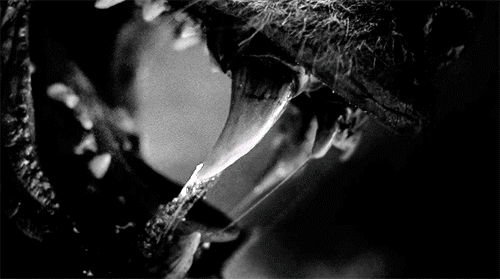Curse, Not Disease

So I already talked about ways to become a werewolf. This post is very closely connected to that one. One thing I emphasized is what I’m going to talk about this time – in modern popular culture, lycanthropy, the condition of being a werewolf, is considered a disease.
But in folklore, it was a curse. And it was only ever a curse. It was never considered a “disease,” or an “infection,” or a “contagion” to be “spread” or “contracted” somehow (all words you’ll hear used a lot in the overwhelming majority of modern werewolf media).
What’s the difference, exactly? Here, it’s this: as a disease, lycanthropy is a physical and mental biohazard anyone and everyone could potentially, and fairly easily, contract. As a curse, lycanthropy is something meaningfully and purposefully bestowed upon an individual or a family line and, at least relatively, unique to them. (That’s not to mention those folklore moments in which werewolves seem to essentially be their own separate race/species entirely.)
So where does this idea come from – it all started in the Early Modern period, aka the Renaissance. This is the time period during which werewolves may have first been considered anything approaching a disease. Because werewolves became associated with, and equated to, madmen – insanity. In the early years of the Early Modern period, as we progress from Late Medieval to Renaissance, we see werewolf accounts and court trials turning steadily more toward science and logical reasoning instead of magic and curses. And what better way to explain a werewolf than to declare them insane and be done with it?
And, indeed, this is when the term lycanthropy first came into common use, as mentioned in previous posts. It’s an ancient word in and of itself, and it was used a long time ago by Galen, among others. But the people of the Early Modern period took it up as a term to refer specifically to the mental disease: hallucinations that someone thinks they are, or are turning into, a wolf. (We refer to this as “clinical lycanthropy” today.)
However, this doesn’t explain how we go from an insanity sentence to a plague spread by bite, like a diseased animal. So how did we get THERE?
On all of that, we can blame – you guessed it – Hollywood. We’re going all the way back to The Wolf Man film from 1941 and its writer, Curt Siodmak. Siodmak came up with, and massively and irrevocably popularized, the idea of lycanthropy being spread by bite.
Almost certainly he picked this because of rabies, which is also – of course – spread by bite, and in a way, just another attempt to try to put in the effort of tying werewolves to some kind of science. And now we’ve seen pop culture latch onto this like everyone wants to marry it. And if not bite, it’s spread in some other way, all ways diseases and infections can be spread: biting, scratching, blood, sex, genetics… you name it.
Werewolves becoming a disease instead of a curse has sapped a great deal of meaning and purpose from the idea of being a werewolf and the werewolf’s very existence in a setting. Turning lycanthropy into a disease can be handled well (and indeed I am choosing to use and explore it in a lot of my own werewolf fiction, so I’m not saying it’s always a bad idea), but broad spectrum, it has turned lycanthropy from a meaningful curse into a common disease. Werewolves are now often little better than plague rats that need to be slaughtered en masse (sometimes with laughable ease – see the worgen starting zone in World of Warcraft, which is another entire topic for me).
There’s another reason why this is overall not a good thing. Werewolves being considered a disease has helped spread false ideas that wolves are disease carriers. This modern idea of lycanthropy as a plague has cost real wolves their lives and helped to solidify the medieval and Early Modern concept that the wolf is outright evil, a creature that deserves only to be killed to make way for humans to continue their progress.
Long story short – being a werewolf in folklore was a curse, not a disease. It happened for a meaning and it served a purpose. While I definitely am not opposed to exploring the idea of lycanthropy as a disease, it’s overall degraded the “status” of the werewolf in pop culture, and it only continues to do so as time passes… That, and it’s caused problems for wolves here in the real world, which is just not cool.
Bonus round:
Now we’ve even carried the pop culture werewolf “spread by bite” over to pop culture zombies! And after this aspect of pop culture werewolves carried over to zombies, zombies have thus carried back over to werewolves in that werewolves have become more like zombies – a plague, contagious monsters dangerous only in hordes.
Zombies didn’t used to be a disease, either. Zombies were a curse, too, once, and now they’re largely a plague, whether they’re created by science or not. Even Resident Evil’s gotten halfway stuck on the idea, when it wasn’t before. In Vendetta we see a zombie strain spread by bite, and in the live-action movies, we get that, of course. And then Resident Evil 8 took it to the next level, making werewolf-zombies…

But if I go on about zombies and modern depictions of the undead, I’m going to go off on another tangent that belongs in another series of posts. And if I go on about Chris Redfield, we have another tangent entirely.